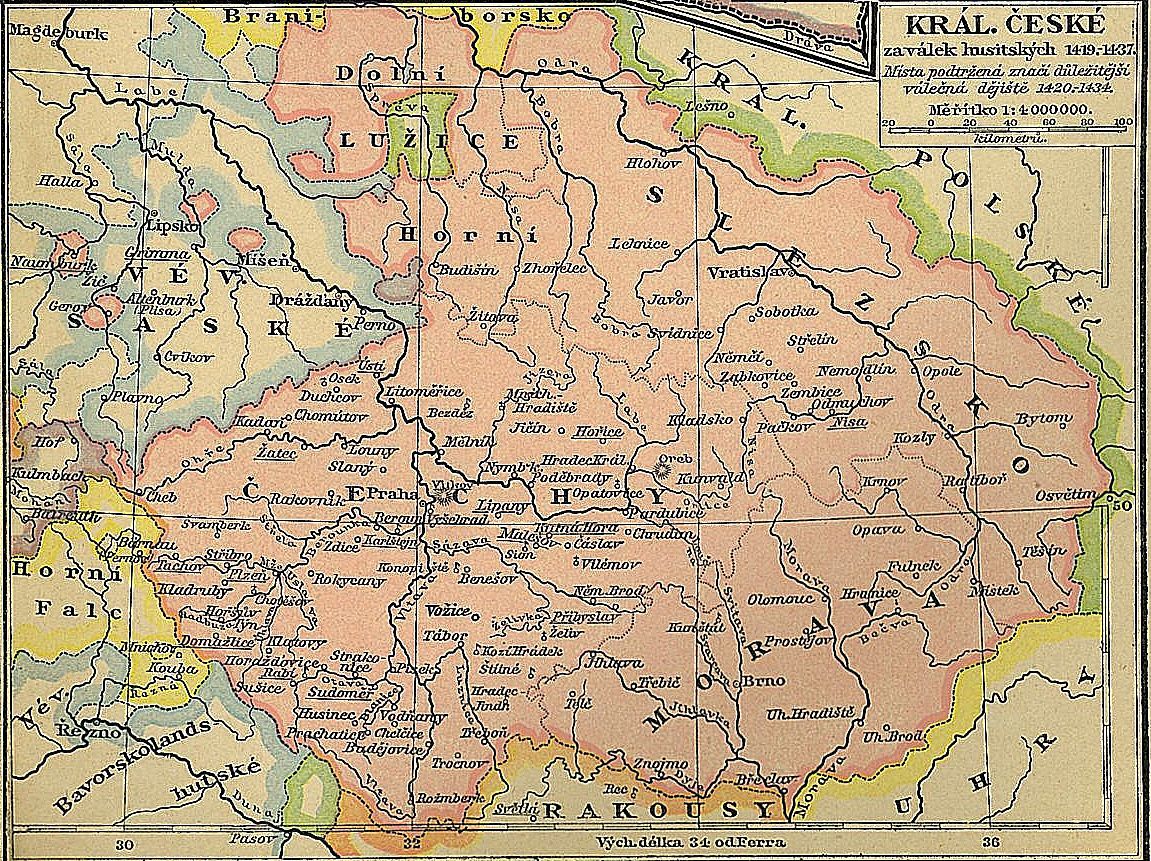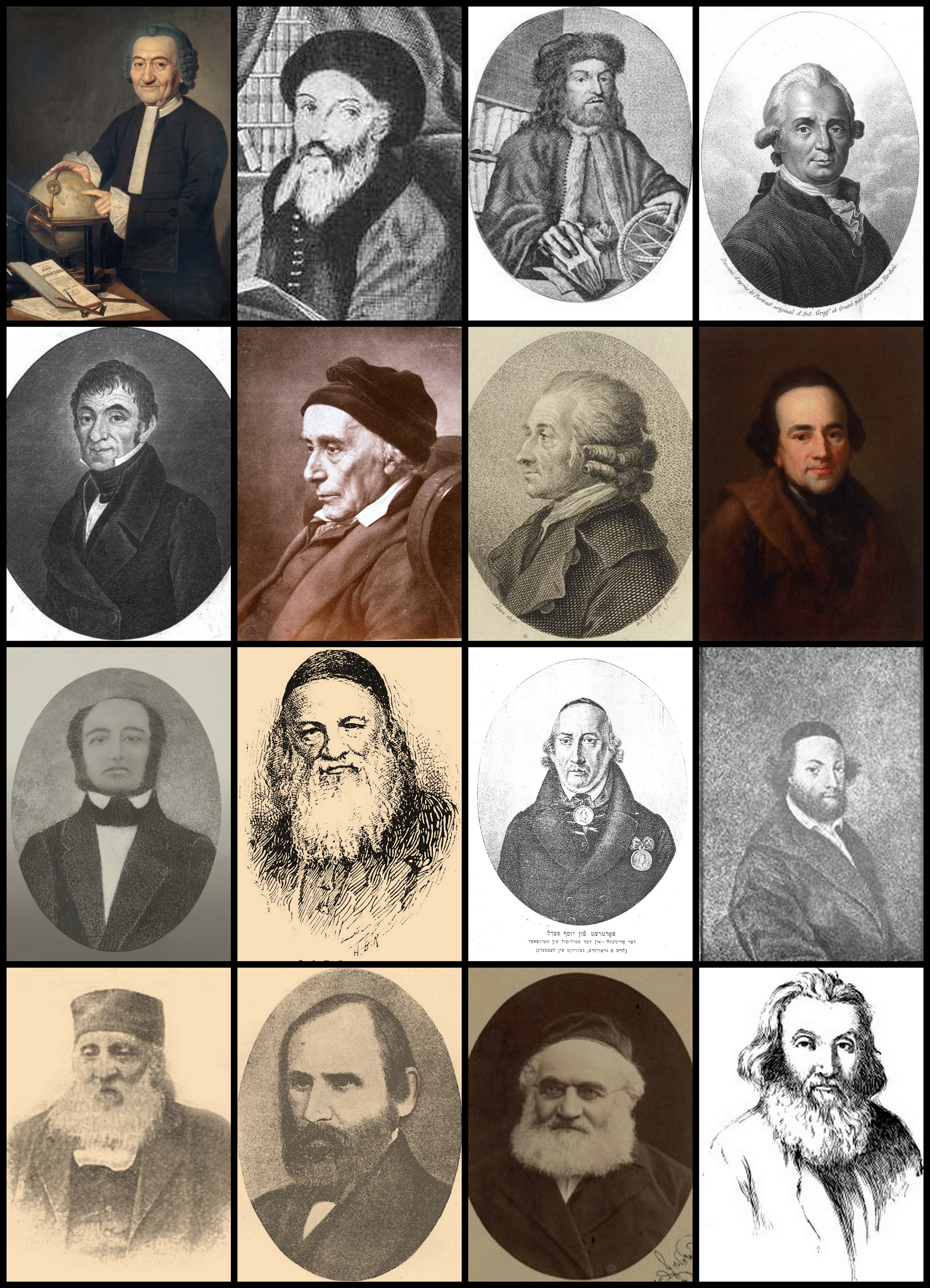|
Jews In Prostějov
The Jewish community in Prostějov was one of the biggest Jewish communities in the Moravian region called the "''Jerusalem of Hana''".The Jewish quarter remained until 1990 when they demolished the buildings. There are two former synagogues: New Synagogue (now Hus Congregational House) and Synagogue Beit Ha-Midrash (owned by Orthodox Church). Rabbi Meir Eisenstadt, Judah Leib Prossnitz, Rabbi Jonathan Eybeschutz, Rabbi Nathan Porges, Rabbi Moses Sofer, orientalist Moritz Steinschneider and famous philosopher Edmund Husserl lived here.''Content in this edit is translated from the existing Czech Wikipedia article at cz:Židé v Prostějově; see its history for attribution.'' Starting in the Middle Ages, Prostějov had important textile and ready-made clothing industries, in which Jews had a central role, although they sometimes clashed with Christian guilds. The first documents that mention Jews in the city date back to 1445. The Jewish community in the city was largely founded by ... [...More Info...] [...Related Items...] OR: [Wikipedia] [Google] [Baidu] |
History Of The Jews In Vienna
The history of the Jews in Vienna, Austria, goes back over eight hundred years. There is evidence of a Jewish presence in Vienna from the 12th century onwards. At the end of the 19th century and the start of the 20th century, Vienna was one of the most prominent centres of Jewish culture in Europe, but during the period of Nazi rule in Austria, Vienna's Jewish population was almost entirely deported and murdered in the Holocaust. Since 1945, Jewish culture and society have gradually been recovering in the city. History Middle Ages The first named Jewish individual was Schlom, Duke Frederick I’s Münzmeister (master of the mint), installed in 1194. Schlom and his family would later be murdered in a pogrom by crusaders. In 1238, emperor Frederick II granted the Jews a privilege, and the existence of community institutions such as a synagogue, hospital and slaughterhouse can be proven from the 14th century onwards. Vienna’s city law empowered a special ''Judenricht ... [...More Info...] [...Related Items...] OR: [Wikipedia] [Google] [Baidu] |
History Of Moravia
The history of Moravia, one of the Czech lands, is diverse and characterized by many periods of foreign governance. Pre-history Early modern humans had settled in the region by the Paleolithic. The Cro-Magnon#P.C5.99edmost.C3.AD, Předmostí Předmostí u Přerova (archeology), archaeological site in Moravia is dated to between 24,000 and 27,000 years old. Ancient Moravia Around 60 BC the Celtic Volcae people withdrew from the region and were succeeded in turn by the Germanic people, Germanic Quadi. Several hundred years later, in the 6th century AD the Slavic tribes arrived in this territory often crossed during the Migration Period by successive Germanic and major Slavic tribes. At the end of the 8th century the Moravian Principality came into being in present-day south-eastern Moravia, Záhorie in south-western Slovakia and parts of Lower Austria. In 833 AD, this became the state of Great Moravia with the conquest of the Principality of Nitra (present-day Slovakia). Their ... [...More Info...] [...Related Items...] OR: [Wikipedia] [Google] [Baidu] |
Holocaust
The Holocaust (), known in Hebrew language, Hebrew as the (), was the genocide of History of the Jews in Europe, European Jews during World War II. From 1941 to 1945, Nazi Germany and Collaboration with Nazi Germany and Fascist Italy, its collaborators systematically murdered some six million Jews across German-occupied Europe, around two-thirds of Europe's Jewish population. The murders were carried out primarily through mass shootings and poison gas in extermination camps, chiefly Auschwitz concentration camp#Auschwitz II-Birkenau, Auschwitz-Birkenau, Treblinka extermination camp, Treblinka, Belzec extermination camp, Belzec, Sobibor extermination camp, Sobibor, and Chełmno extermination camp, Chełmno in Occupation of Poland (1939–1945), occupied Poland. Separate Nazi persecutions killed a similar or larger number of non-Jewish civilians and prisoners of war (POWs); the term ''Holocaust'' is sometimes used to include the murder and persecution of Victims of Nazi ... [...More Info...] [...Related Items...] OR: [Wikipedia] [Google] [Baidu] |
Extermination Camps
Nazi Germany used six extermination camps (), also called death camps (), or killing centers (), in Central Europe, primarily in occupied Poland, during World War II to systematically murder over 2.7 million peoplemostly Jewsin the Holocaust. The victims of death camps were primarily murdered by gassing, either in permanent installations constructed for this specific purpose, or by means of gas vans. The six extermination camps were Chełmno, Belzec, Sobibor, Treblinka, Majdanek and Auschwitz-Birkenau. Extermination through labour was also used at the Auschwitz and Majdanek death camps. Millions were also murdered in concentration camps, in the Aktion T4, or directly on site. Additionally, camps operated by Nazi allies have also been described as extermination or death camps, most notably the Jasenovac concentration camp in the Independent State of Croatia. The National Socialists made no secret of the existence of concentration camps as early as 1933, as they served ... [...More Info...] [...Related Items...] OR: [Wikipedia] [Google] [Baidu] |
Nazis
Nazism (), formally named National Socialism (NS; , ), is the far-right politics, far-right Totalitarianism, totalitarian socio-political ideology and practices associated with Adolf Hitler and the Nazi Party (NSDAP) in Germany. During Hitler's rise to power, it was frequently referred to as Hitler Fascism () and Hitlerism (). The term "neo-Nazism" is applied to other far-right groups with similar ideology, which formed after World War II, and after Nazi Germany collapsed. Nazism is a form of fascism, with disdain for liberal democracy and the parliamentary system. Its beliefs include support for dictatorship, fervent antisemitism, anti-communism, anti-Slavism, anti-Romani sentiment, scientific racism, white supremacy, Nordicism, social Darwinism, homophobia, ableism, and the use of eugenics. The ultranationalism of the Nazis originated in pan-Germanism and the ethno-nationalist ''Völkisch movement, Völkisch'' movement which had been a prominent aspect of German nationa ... [...More Info...] [...Related Items...] OR: [Wikipedia] [Google] [Baidu] |
Gestapo
The (, ), Syllabic abbreviation, abbreviated Gestapo (), was the official secret police of Nazi Germany and in German-occupied Europe. The force was created by Hermann Göring in 1933 by combining the various political police agencies of Free State of Prussia, Prussia into one organisation. On 20 April 1934, oversight of the Gestapo passed to the head of the ''Schutzstaffel'' (SS), Heinrich Himmler, who was also appointed Chief of German Police by Hitler in 1936. Instead of being exclusively a Prussian state agency, the Gestapo became a national one as a sub-office of the (SiPo; Security Police). From 27 September 1939, it was administered by the Reich Security Main Office (RSHA). It became known as (Dept) 4 of the RSHA and was considered a sister organisation to the (SD; Security Service). The Gestapo committed widespread atrocities during its existence. The power of the Gestapo was used to focus upon political opponents, ideological dissenters (clergy and religious org ... [...More Info...] [...Related Items...] OR: [Wikipedia] [Google] [Baidu] |
German Occupation Of Czechoslovakia
German(s) may refer to: * Germany, the country of the Germans and German things **Germania (Roman era) * Germans, citizens of Germany, people of German ancestry, or native speakers of the German language ** For citizenship in Germany, see also German nationality law **Germanic peoples (Roman era) * German diaspora * German language * German cuisine, traditional foods of Germany People * German (given name) * German (surname) * Germán, a Spanish name Places * German (parish), Isle of Man * German, Albania, or Gërmej * German, Bulgaria * German, Iran * German, North Macedonia * German, New York, U.S. * Agios Germanos, Greece Other uses * German (mythology), a South Slavic mythological being * Germans (band), a Canadian rock band * "German" (song), a 2019 song by No Money Enterprise * ''The German'', a 2008 short film * "The Germans", an episode of ''Fawlty Towers'' * ''The German'', a nickname for Congolese rebel André Kisase Ngandu See also * Germanic (di ... [...More Info...] [...Related Items...] OR: [Wikipedia] [Google] [Baidu] |
World War I
World War I or the First World War (28 July 1914 – 11 November 1918), also known as the Great War, was a World war, global conflict between two coalitions: the Allies of World War I, Allies (or Entente) and the Central Powers. Fighting took place mainly in European theatre of World War I, Europe and the Middle Eastern theatre of World War I, Middle East, as well as in parts of African theatre of World War I, Africa and the Asian and Pacific theatre of World War I, Asia-Pacific, and in Europe was characterised by trench warfare; the widespread use of Artillery of World War I, artillery, machine guns, and Chemical weapons in World War I, chemical weapons (gas); and the introductions of Tanks in World War I, tanks and Aviation in World War I, aircraft. World War I was one of the List of wars by death toll, deadliest conflicts in history, resulting in an estimated World War I casualties, 10 million military dead and more than 20 million wounded, plus some 10 million civilian de ... [...More Info...] [...Related Items...] OR: [Wikipedia] [Google] [Baidu] |
Haskalah
The ''Haskalah'' (; literally, "wisdom", "erudition" or "education"), often termed the Jewish Enlightenment, was an intellectual movement among the Jews of Central Europe, Central and Eastern Europe, with a certain influence on those in Western Europe and the Muslim world. It arose as a defined ideological worldview during the 1770s, and its last stage ended around 1881, with the rise of Autoemancipation, Jewish nationalism. The movement advocated against Jewish reclusiveness, encouraged the adoption of prevalent attire over traditional dress, while also working to diminish the authority of traditional community institutions such as rabbinic courts and boards of elders. It pursued a set of projects of cultural and moral renewal, including a revival of Hebrew for use in secular life, which resulted in an increase in Hebrew language, Hebrew found in print. Concurrently, it strove for an optimal integration in surrounding societies. Practitioners promoted the study of Exogeny, exo ... [...More Info...] [...Related Items...] OR: [Wikipedia] [Google] [Baidu] |
Frankism
Frankism was a Sabbatean religious movement originating in Rabbinic Judaism of the 18th and 19th. centuries, Created in Podolia, it was named after its founder, Jacob Frank. Frank completely rejected Jewish norms, preaching to his followers that they were obligated to transgress moral boundaries, embracing antinomianism. The Frankists engaged in sexually promiscuous rites, such as the infamous 1756 incident in Lanškroun where they were allegedly caught dancing around a half-naked woman symbolizing the Shekhinah. At its height Frankism, claimed perhaps 50,000 followers, primarily Jews living in the Polish–Lithuanian Commonwealth, as well as in other regions of Central and Eastern Europe. Later, Frankists were encouraged to convert in mass to Catholicism. Description Frankists believed in Sabbatai Zevi, one of the most famous of all self-proclaimed messiahs in Jewish history. He believed in transgressing Jewish commandments to elevate the " divine sparks" constrained by ... [...More Info...] [...Related Items...] OR: [Wikipedia] [Google] [Baidu] |
Shabbatean
The Sabbateans (or Sabbatians) are a variety of Jewish followers, disciples, and believers in Sabbatai Zevi (1626–1676), an Ottoman Jewish rabbi and Kabbalist who was proclaimed to be the Jewish Messiah in 1666 by Nathan of Gaza. Vast numbers of Jews in the Jewish diaspora accepted his claims, even after he outwardly became an apostate due to his forced conversion to Islam in the same year. Sabbatai Zevi's followers, both during his proclaimed messiahship and after his forced conversion to Islam, are known as Sabbateans. In the late 17th century, northern Italy experienced a surge of Sabbatean activity, driven by the missionary efforts of Abraham Miguel Cardoso. Around 1700, a radical faction within the Dönmeh movement, led by Baruchiah Russo, emerged, which sought to abolish many biblical prohibitions. During the same period, Sabbatean groups from Poland migrated to the Land of Israel. The Sabbatean movement continued to disseminate throughout central Europe and nort ... [...More Info...] [...Related Items...] OR: [Wikipedia] [Google] [Baidu] |






